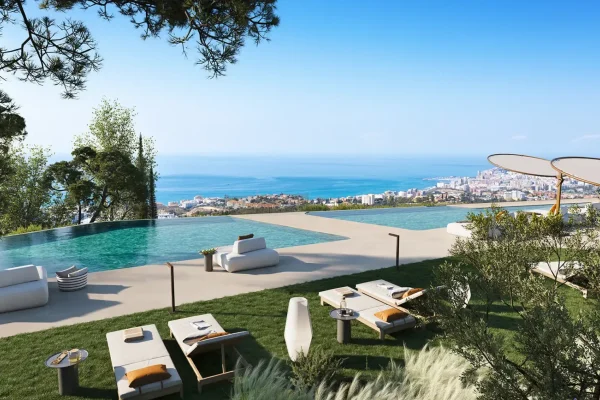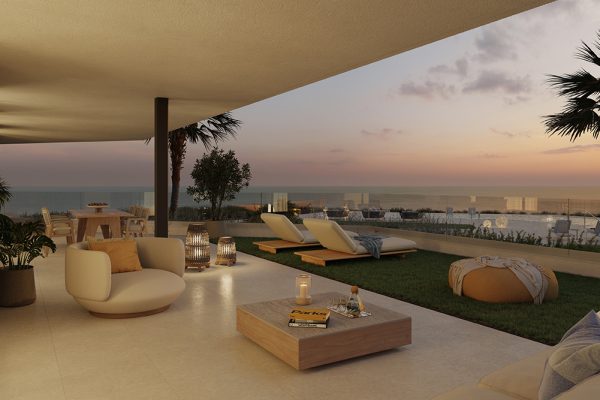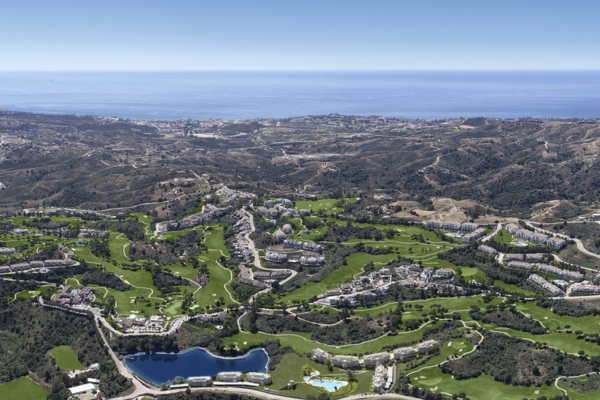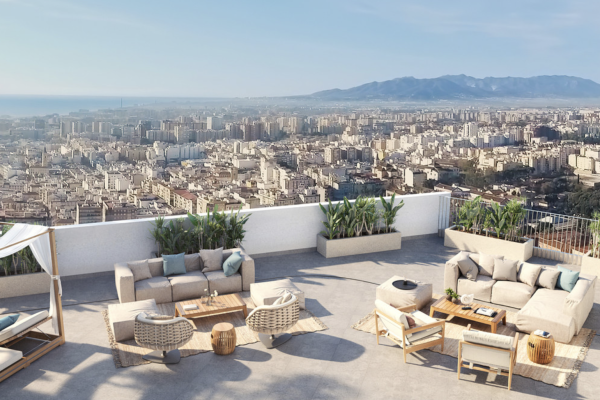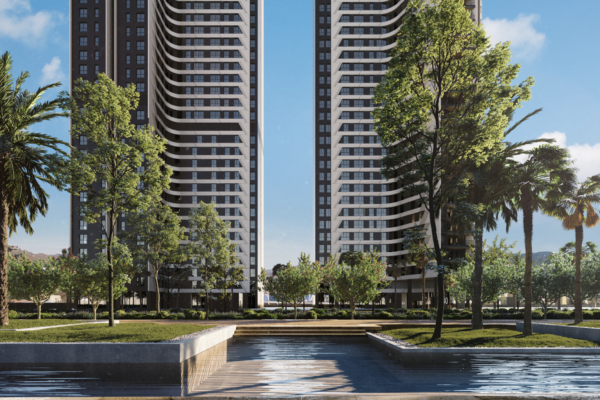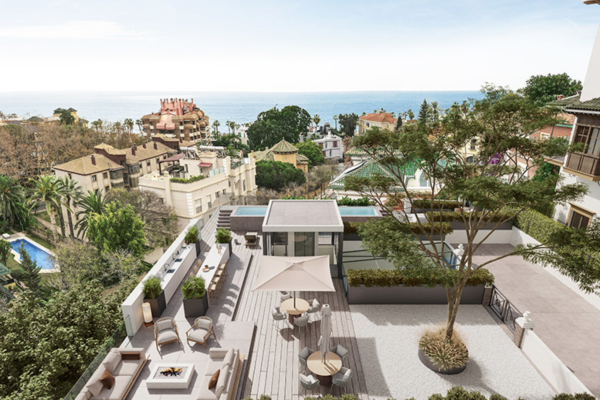If you’re considering purchasing land in Spain for development purposes or a villa renovation, it’s very important to check the planning regulations before making the purchase especially if you’re unfamiliar with Spanish regulations.
Spain’s legal framework, customs, and business practices differ from those in Northern Europe and Scandinavia. Several questions often arise during the land purchase in Spain and it’s easy to make mistakes in this process. To safeguard your interests, it’s important to seek professional guidance in the buying process.
In Spain, land typically falls into two main categories :
- urbano – which generally is zoned for development
- rustico – which does not
Both categories have also sub-categories with regional regulations.
However, the distinction between urban and rustico isn’t always straightforward.
Urbano land isn’t necessarily limited to urban areas in the traditional sense of the term in English. You might get into “urban” land for sale in the countryside, next to villages for example, or in an area zoned for development.
Additionally, there are instances where development on rustico land is permitted!
Local municipalities might interpret laws differently, and in certain well-publicized scenarios, their interpretations may conflict with regional authorities. Achieving a comprehensive understanding requires extensive expertise, making it advisable to enlist qualified local professionals to assess the situation on your behalf.
How do understand the Spanish terminology of lands?
Some terms describe the legal status of the land from a planning perspective –
1. urbano, 2. urbanizable, 3. no urbanizable and 4. protegido.
Some terms describe the current state of the land for sale (such as suelo urbanizado), which will include all its services and infrastructure (Suelo en desarrollo and suelo sin desarrollar).
Let’s delve deeper into these details.
What is Suelo Urbano?
This type of land is situating generally within cities or near to the towns and villages.
The plot is marked on the local plan (Plan General de Ordenación Urbana), which is freely available in the local town hall for inspection for anyone.
Suelo urban generally would have all the services established, however, in some cases, they may need finishing off and it means more costs and legal fees for the buyer.
What is Suelo Urbanizable?
This category refers to the plot for sale that’s in the process of being rezoned so it can be legally developed. On this land outline, planning permission isn’t necessary. You apply for detailed planning permission from the local town hall.
What is Suelo Urbanizado?
This type of land is for sale which is fully urbanizado and have all the services already established such as roads surfacing, pavements, street lighting, main drainage, mains water, mains electricity, and telephone landline.
You must check all these services available and if any item hasn’t been installed yet, determine whether there’s a possibility of charging the owners of the plots for the installation of that service.
What is Suelo Rustico?
Rural land in Spain is subject to national law and the land regulations of autonomous regions, despite being under the jurisdiction of a local town hall. Constructing on rural land in Spain is typically not possible as rural land is inherently deemed non-buildable. Nonetheless, there are particular circumstances under which construction may be permitted in these areas.
For example, if there is a declaration of public interest; or the drafting of a Land Use Planning Instrument, such as the proyecto de actuación en suelo no urbanizable. These circumstances can vary greatly between municipalities.
For example, it may be possible in some municipalities to build on 2% of the area a total construction of 4% – so you would need a lot of land to build a substantial house. There may be other regulations that stipulate that the buildings be used for agricultural purposes. If you are thinking of doing this, the regulations need to be carefully studied.
Take note that for rustic land you must have the approval of the regional authority in addition to the approval of the local authority. You may be handed some official paperwork outlining the approval of the local authority with nothing from the regional authority.
The regional authority of Andalucia has been tightening the regulations in recent years and to build or renovate on rustic land in Andalusia, you have to demonstrate that the building you propose is necessary for either agricultural use or for rural tourism. In the case of the former, this would mean being registered for tax purposes as a farmer and being able to produce the documentation to support this.
What means if land is Protegido?
Some areas are more heavily protected (protegido) than others.
To build a house in Spain on heavily protected land, you may have to get authority from many different institutions like environmental protection, national parks, wildlife protection, river and water authorities, road authorities and also from the local town hall and the Junta de Andalucia. This process can be really time-consuming and requires professional presentation.
Restrictions and regulations for building on land in Spain
Before buying land in Spain, make sure you get the town planning certificate (cédula urbanística or certificado urbanistico), which specifies the planning zone, use, building space and building type for any plot of land.
Also be sure to check the local building norms for such things as height of buildings, whether you can put in a surrounding wall, the colour of exterior walls, number of balconies and so on.
You’ll also need to check the locally applicable area occupancy rules to find out what percentage of the area you can build on. This will depend on a number of different factors.
It may be, for example, that you can build on 30% of the plot you are interested in buying. Another regulation is the total construction allowed on the plot which again will vary.
So you are limited in how much of the plot you can cover, and you are limited by the maximum size of building you can have.
Underground construction, such as basements, is typically not included in permitted volume limitations, as long as it remains entirely below street level but it can still be useful space.
Terraces, swimming pools, etc. are also excluded from the calculations.
For houses that are built on a slope, the basement/cellar area is counted for permitted volumes at a reduced rate according to the gradient of the slope.
There are rules governing the maximum height which you will also need to know before buying to be certain you can construct what you have in mind. For example, the regulations may stipulate a seven-metre height restriction.
Style and aesthetic restrictions can vary significantly. Often, you may have a degree of freedom to construct according to your preferences, within reasonable limits. However, in historic centers, regulations tend to be considerably strict.
Regulations are continuously being updated and are also open to interpretation by local and regional planning officers. So whatever you are told about what is possible on the land, you still need a current, formal, assessment of the situation before you buy the land and this should be done by an architect. Finally ask your lawyer to confirm that the property, in its current state, conforms with all the local, regional and national regulations.
You should ask an architect to make enquiries with the local town hall (and if necessary, as in the case of rustic land, the regional authorities) that what you plan to do to is permitted under the regulations that apply to the land. They may need to do this in general rather than specific terms if you haven’t had drawings done at this stage and this is best done by an architect in Spain.
Legal documentation
There are three basic documents:
- Nota simple: land registry
- Catastral: local rates
- Escritura: title deeds
Nota simple
Check the usage outlined in the Nota Simple document. It will provide insight into the applicable planning regulations for the land. For instance, it may indicate whether the land is designated as rustic (rústico) or residential (residencial), among other classifications.
It’s important to note that court orders may not always be listed on the Nota Simple and it’s advisable to request your lawyer to inquire with the town hall (disciplina urbanística) to obtain comprehensive information.
Request your lawyer to obtain a certificate verifying that the document they are working with is complete and accurate. Without this certification from the registrar, there is no guarantee of its completeness and accuracy.
Catastral document
Similar to the Nota Simple, verify the land usage indicated on the cadastral document (catastral). This will provide additional evidence regarding the planning regulations applicable to the land.
The catastral value, which is not on the catastral document, is a theoretical estimate of value.
It is used to calculate local taxes due on the property for rubbish collection, street lighting, etc. that are collected annually.
The catastral value can be found on the IBI statement, which the vendor or their lawyer will give you. There can be an additional tax to pay if the purchase price is lower than the catastral value. The actual catastral value isn’t the one on the IBI statement (that would be far too simple!), it is a multiplier of this. Your lawyer knows how to check this information of the regional authority.
Plot borders
The cadastral document includes a plan, which can be useful. However, it’s crucial to understand that the cadastral document alone does not confer legal rights. Many individuals from Northern Europe mistakenly assume that the plan establishes their title and that the borders depicted on the plan represent their land boundaries.
In reality, the borders are defined in written form within the escritura (title deeds). These documents typically reference neighboring ownerships and natural features to delineate property boundaries.
In rural areas lacking fencing, neighbors may rely on landmarks such as trees or painted rocks to determine the borders between their properties.
When purchasing rural land that is unfenced, it’s important to consider that this may be intentional to allow wildlife to move freely across the territory. Therefore, you might want to avoid erecting fences, as doing so could potentially lead to resentment among neighbors who have coexisted peacefully for generations without precisely defining property boundaries.
Since November 2015, it has become mandatory that whenever updates are made to either the nota simple or cadastral documents, a topographical survey must be conducted and appended to these documents. This requirement is a sensible measure and over time will help rectify existing discrepancies. It may be possible to arrange for this survey to be carried out at the vendor’s expense.
Plot areas
When buying land in Spain, you might encounter different square meter measurements across various documents. This is normal but important to investigate beyond measuring techniques. For renovation projects, differences could indicate illegal extensions, potentially requiring restoration before renovation. Engage with local authorities to ensure compliance and avoid unexpected delays in your renovation plans.
In some cases, you may be required to first restore the building to comply with the permitted built area on the site. Only after this restoration, which could take months or even years, can you apply for a license to renovate the building according to your preferences.
It’s often the case that cadastral documents aren’t updated when properties are improved or extended to avoid higher taxes. Prior to finalizing the contract, it’s crucial to ensure the vendor corrects this to avoid potential obligations for back taxes in the future.
Additionally, when determining the available area for construction or renovation, remember that permanently covered terraces are typically counted at 50%.
Border disputes
Border disputes typically follow a structured procedure, which entails each party’s lawyer and a topographical surveyor meeting on-site. Their objective is to agree on the precise position of the border and delineate it on a plan. This process helps resolve disputes in a systematic and legally recognized manner.
Access rights
It’s essential to request your lawyer to confirm your access rights and responsibilities, including any obligations to contribute to the maintenance costs of any shared access. Moreover, inquire about your liability in the event of damage to the access road or infrastructure during construction. Specifically, seek clarification on who is responsible if one of your contractors damages part of the access that is either privately or publicly owned.
For instance, if a truck knocks over a street sign, understanding how the damage is assessed and paid for is crucial. Your lawyer can provide guidance on navigating these scenarios and ensuring legal compliance and resolution.
Community ownership
It’s important to recognize that many properties entail some form of community ownership, which may involve access rights and responsibilities or shared common areas.
To ensure clarity regarding any financial obligations associated with the property you’re interested in, your lawyer will contact with the administrator about any outstanding debts or upcoming expenses. Additionally the lawyer will review the recent community documents to gain insight into the property’s financial and administrative matters. This will help you make informed decisions regarding your potential investment.
Services connected to the land
In urban areas, most land is typically connected to mains electricity, water, and sewerage systems. However, it’s essential to have your lawyer verify whether there are any disputes among the community of neighbors regarding the infrastructure.
For properties in rustic areas, the availability of services can vary significantly. In some cases, you may need to consider going off-grid for your utilities.
Electricity
In today’s age, setting up solar panels to generate your own electricity is relatively straightforward and offers several benefits. It can help reduce electricity bills, decrease reliance on fossil fuels for grid electricity, and enhance the value of your property in the long term.
It’s important to mention that as of the time of writing, issues such as the “sun tax” have not been fully resolved, so it’s essential to stay informed about relevant regulations and policies when implementing renewable energy solutions.
Water
Water rights in Spain are highly regulated, and your lawyer will verify all related documentation.
Irrigated land (status is available on the nota simple and cadastral documents) is more valuable than dry land, and obtaining a well license may be challenging due to groundwater management.
Your license might specify water usage limits because it can be impacting neighbors. Water purity may have to be tested and approved.
If you are buying land in Spain with a well and pump machinery, ask to see evidence that it has been serviced regularly.
Rights to water from acecias (irrigation channels) are documented. There may be a community of owners who benefit from the acequia and who maintain it. You may have the right to a certain number of hours a week from which you fill your storage tanks. You should check if the acequia has ever dried up.
Sewerage
In certain residential “urban” estates, each property has its own septic tank, and owners are obligated to contribute to the cost of a mains system in the future. This could entail significant expenses. In the interim, each villa must manage its own wastewater.
Proper installation and maintenance of soakaways are essential. Septic tanks and cesspits should be officially registered as part of the property. Seek guidance from your lawyer regarding these matters to ensure compliance and proper management.
Topography and geology
These kind of factors can have a significant impact on the value of the plot.
Topography
Building on a steep slope typically incurs higher costs. It may involve excavating a platform, constructing on stilts, or a combination of both. In some cases, the resulting building may feature multiple levels. Interestingly, sites with the most picturesque views often have slopes.
Before designing your home, your architect will require an accurate topographical survey. However, initial discussions about the feasible home design can commence with a visual inspection.
Geology
The geology is hidden, so you don’t know what is there until you have carried out a geotechnical survey, which is a requirement of the College of Architects and the building licence.
Instability in an area typically becomes apparent through observable signs such as cracks in neighboring properties. If concerned about geological conditions but hesitant to lose the plot to another buyer, you may negotiate with the seller to pay a deposit contingent on a satisfactory geological survey.
The presence of neighboring properties in the same geological area can provide reassurance about the viability of your plot.
A geotechnical survey involves drilling, sampling, and analysis, which may take several weeks. If the land is deemed suspect, a more comprehensive survey with additional samples may be recommended. It’s essential to engage a competent geological surveyor to avoid potentially costly surprises.
This survey carries significant legal and professional responsibilities, producing a report indicating ground stability and informing the architect about foundation strength and requirements for retaining walls. The architect’s design is guided by the findings of the geotechnical survey.
Taxes for buying a plot in Costa del Sol
When considering the acquisition of a plot designated for individual houses in costa del Sol, there are critical factors to ponder before proceeding with an offer or arranging a viewing.
One such crucial consideration revolves around the ownership status of the plot in question—whether it is held by a Spanish company or a private individual. It is imperative to address this query with your agent at the outset of your property exploration journey.
These two ownership types are selling a plot have significant financial implications considering the taxes.
If the plot is under the ownership of a private individual, the applicable transfer tax stands at a modest 7% but if the ownership falls under a Spanish company, the tax landscape undergoes a considerable shift. Here, 21% VAT is added plus an additional 1.2% Stamp Duty.
To put this into perspective, consider a plot valued at €500 000 million.
Should it be owned by a private individual, the associated tax burden would amount to €35,000. However, if the ownership rests with a Spanish company, the tax obligation escalates significantly, resulting in an additional €111,000 in taxes. For a plot valued at €1 million, the contrast becomes even more pronounced.
It is crucial to recognize that while the tax implications may vary based on ownership, all other costs associated with acquiring the plot remain consistent with standard property transactions.
Please read about taxes in the purchase process here.

